Giving Injections to Livestock
When you have a small farm or homestead, chances are good that you’ll have to administer medication at some point or another. Let’s talk about the different methods of giving injections to livestock.
Quick disclaimer! I am not a veterinarian, just a homesteader. Always consult your veterinarian prior to giving injections to livestock or administering any sort of medical care. Please see my full disclaimer here.
Why do animals need injections?
There can be a whole host of reasons your animals might need an injection. Giving wormers, yearly vaccinations, or treating with antibiotics will require the use of some form of an injection.
Oral Medications and Drenches
Some medications can be given orally or via a drench on the skin.
Oral
A typical wormer is given orally. You can buy it in tubes that are syringe style. You simply set the wormer or medicine at the right amount, put it in their mouths as far back as you can go, and shoot it in.
Sometimes oral medications are also referred to as “drenches” or an “oral drench”.
Things like copper boluses can be given with a little pill plunger as pictured below.
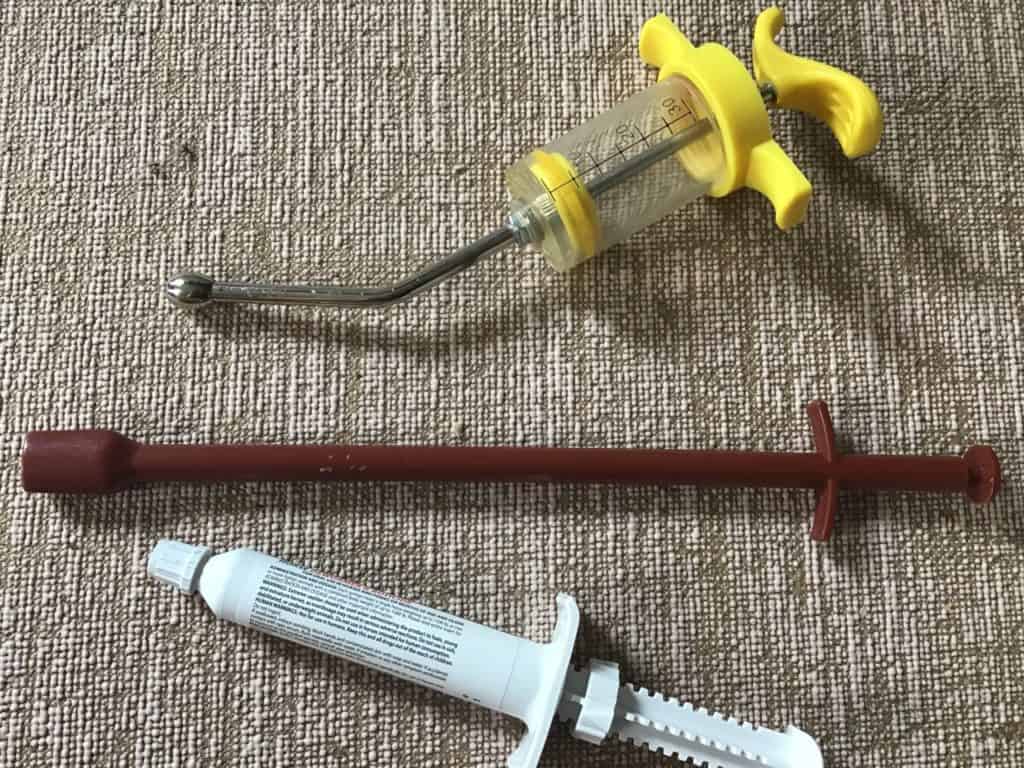
Skin
Less common ways of giving medication is through a topical application on the skin. This confusingly can also sometimes be called a “drench”. If you are familiar with flea medication for family pets it is the same idea. You place the liquid on their back, typically between the shoulder blades. This can also be called a “pour on.” I have personally used this method only with ivermectin to treat a wormy goat.
Intramuscular Injection
This type of medication gives you a very obvious clue as to how it should be administered, “muscular”. When administering an intramuscular injection you should select a meaty, muscly part of the animal.
The most popular place for intramuscular injection is the neck just in front of the shoulder. While the shoulder itself or even the rump are good place in theory, if there is any issue with the injection and this is an animal you might eat, it can ruin the meat in that area.
When given in the muscle, it can very quickly absorb into the blood stream.
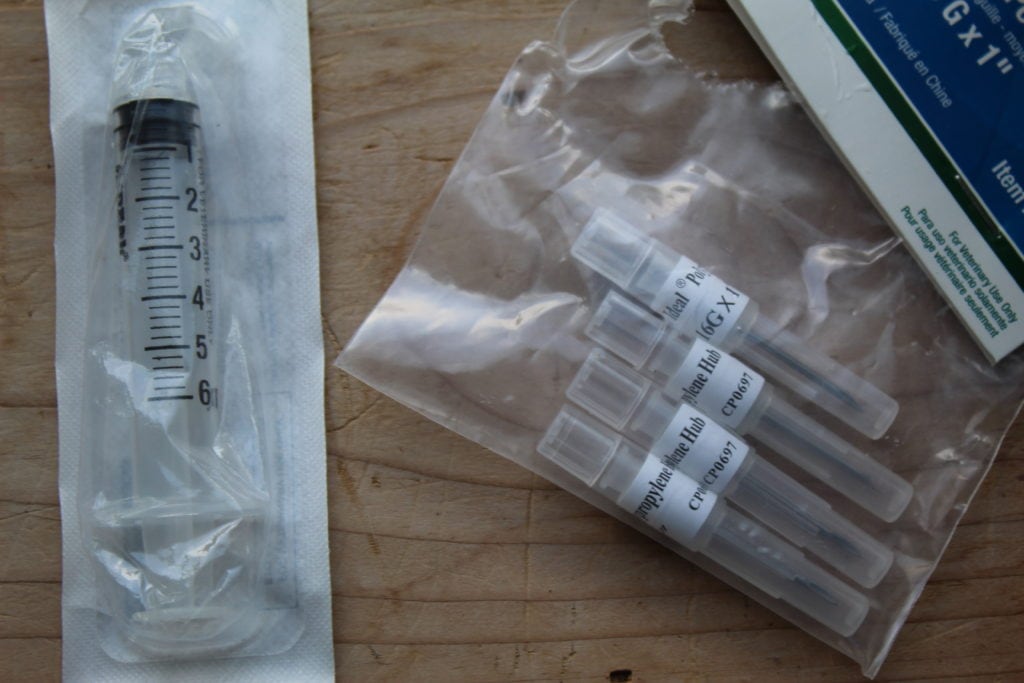
Subcutaneous Injection
Subcutaneous means “under the skin”. It is sometimes called “SubQ”. This is a very simple method of giving medication. Again, it is largely given in the neck as there is extra skin tissue that can be pulled up, making it easy to insert the needle. Under the armpit is another good option.
Medications given subcutaneously are meant to be slowly absorbed by the body. Under the skin has less blood vessels than muscle tissues, so it takes longer to enter the animal’s system.
When giving this type of medication, you typically “tent up” the skin to make an easy spot to place the needle. This helps keep the needle under the skin and not deeper in the tissues our poking out the other side.

Intravenous Injection
This type of injection also gives a great clue as to how it should be administered, “venous” meaning “in the vein”.
Intravenous injection goes straight into the vein so it has almost immediate results.
This method of treatment is one you won’t often if ever have to use. It is most commonly done by veterinarians and you should not attempt intravenous injection unless you are under supervision of a trained professional or have had training yourself.
Selecting the Right Needle for Livestock
Depending on what type of injection you are giving and to what type of animal the size needle will vary.
What are the different size needles?

Needles are measured in two ways, the gauge (diameter or how wide the needle is) and length.
The larger the gauge, the smaller the needle. So if you have an 18 gauge needle, that will be smaller than a 16 gauge. If you are familiar with firearms it is the same idea.
The length is simply how long the needle is. You will need a longer needle for intramuscular injections, as you have to get the medication into the muscle tissue. A shorter needle can be used for SubQ.
What size needle should I use on my cow, goat, pig, etc?
While you can technically use just about any gauge needle to get the job done, using one that is more suited to the livestock you have will work best.
The gauge also might need to change depending on how thick the liquid is. A thicker liquid will do best with a thicker gauge needle.
Finally, giving an intramuscular injection will need a longer needle than a subcutaneous one.
Here is a general guide:
- Cattle, Pigs and Sheep – 18 or 16 gauge with a 1 or 1-1/2 inch length
- Piglets or smaller breed pigs– 18 gauge with a 1/2 inch length
- Dogs and Cats – 20 or 22 gauge with a 1/2 -1 inch length
- Goats -20 or 22 gauge needles for liquidy medications or 18 to 20 gauge needles for thicker medications. SubQ injections work with a 3/4 length. Intramuscular require a 1-1/2 inch length.
- Horses – 18 gauge x 1 in.
If you are giving medications to a goat, the Extension Foundation has a nice chart with more information.
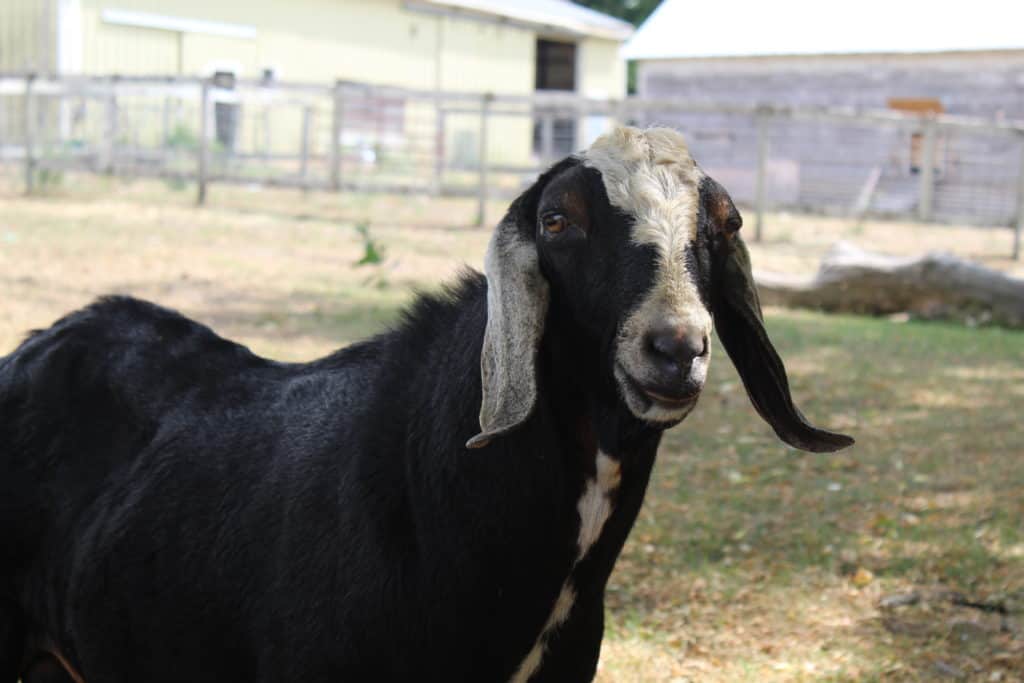
What’s the difference between ML and CC?
Nothing, they are the same thing! If something calls for 3 ML and your syringe only has CC’s on it, they mean exactly the same thing.
Always Use Sterile Equipment
When giving injections to animals you should NEVER use the same needle on multiple animals. Once I’ve used a needle and the syringe (plunger) I throw the whole thing out.
You should also never give an injection, then put that needle back in the bottle to get more. Let’s say you are giving 10 cc’s of an antibiotic and your syringe only goes to 5 cc’s. Do not fill it to 5, give the injection, then stick the needle back in the bottle to refill it.
Some sources say you can reuse the plunger/syringe, meaning in this example you could pop of the needle and toss it, replace it with a new one, then take the 5 cc’s. Personally I’d just get a whole new set up or just use a larger syringe to begin with.
Withdrawl Times
When giving injections to livestock, keep in mind that after giving some forms of medication you will need to wait a certain amount of time before it is safe to consume the animal’s milk or meat. Be sure to read the medication labels or consult your veterinarian for accurate information on this.
Watch and Learn
If you are going to be giving injections to livestock anytime soon, check out this video where I go over these topics in detail and show you where to administer injections.
Pin it for Later



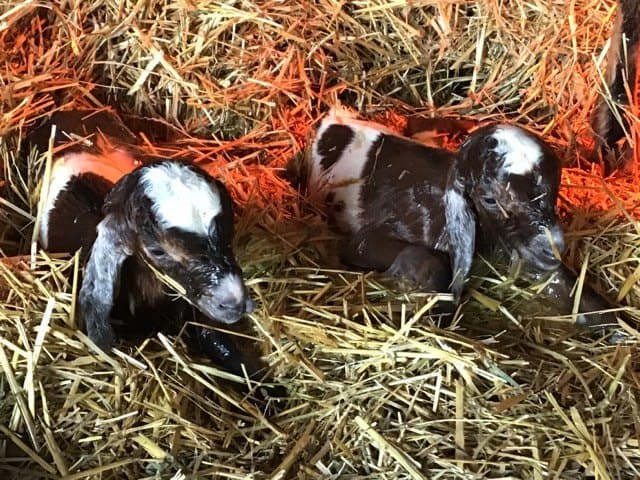
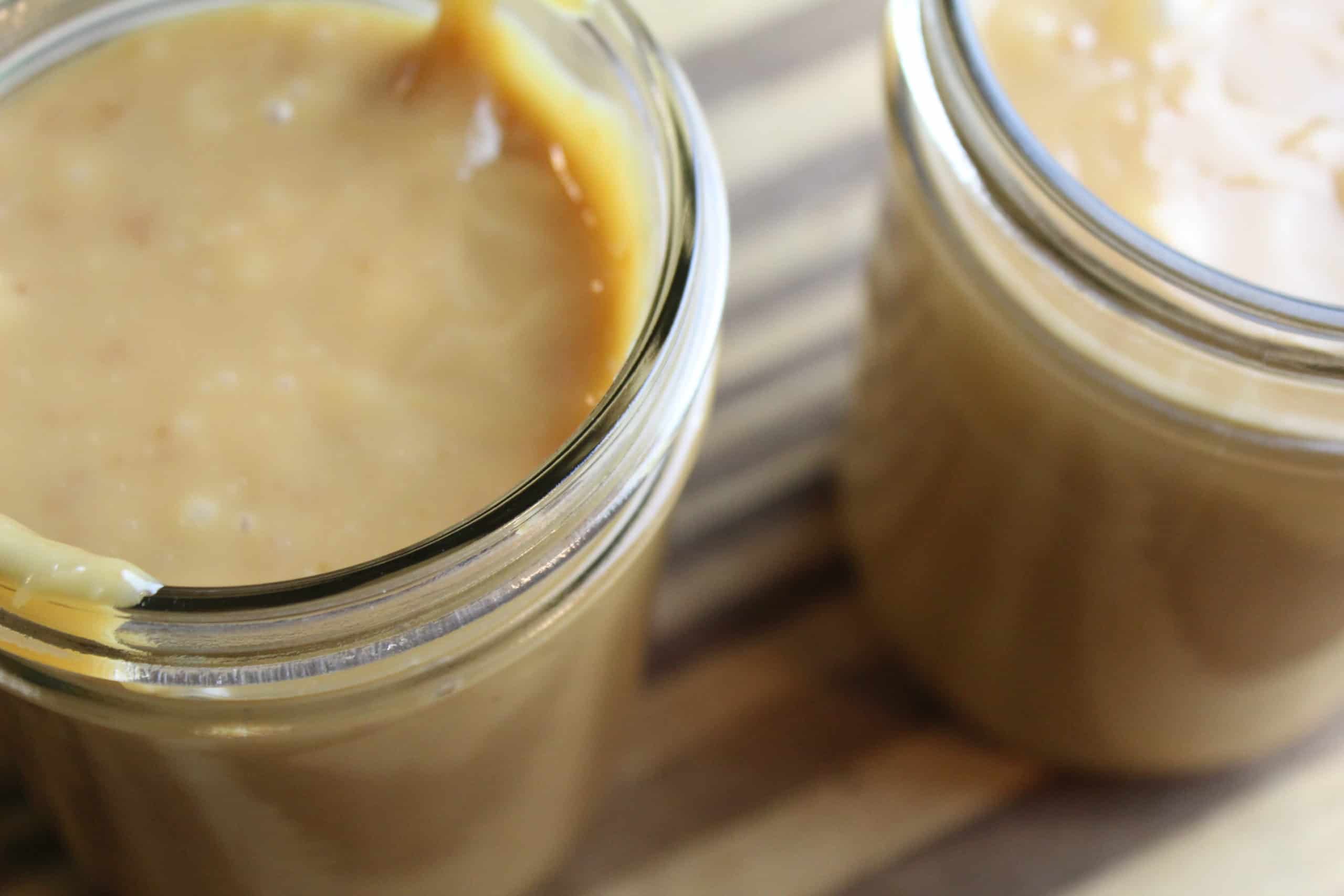
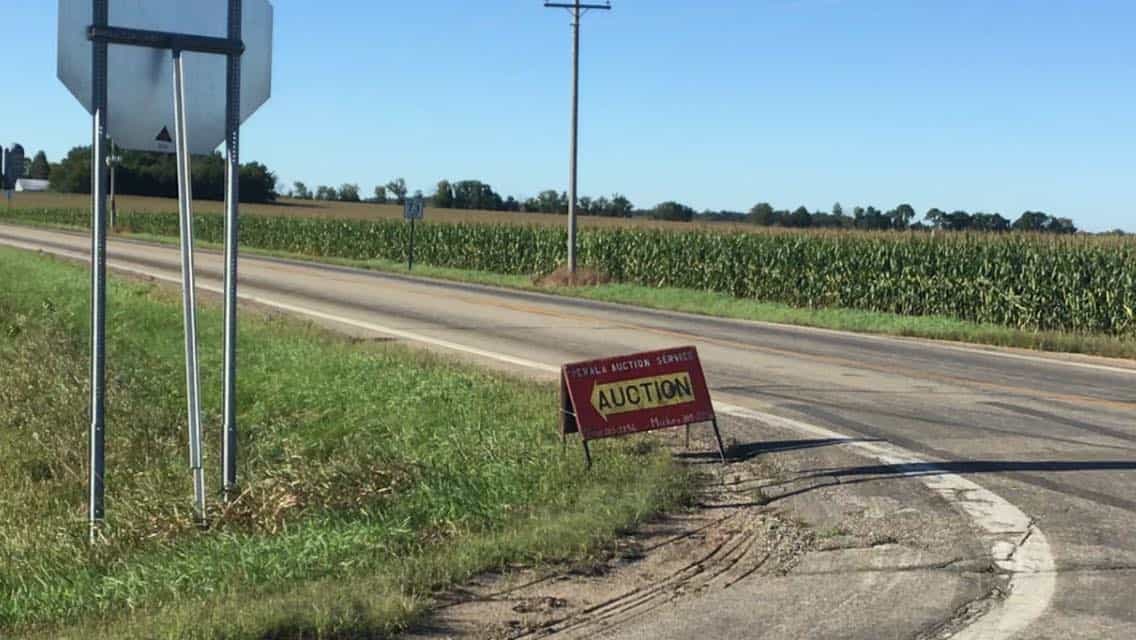
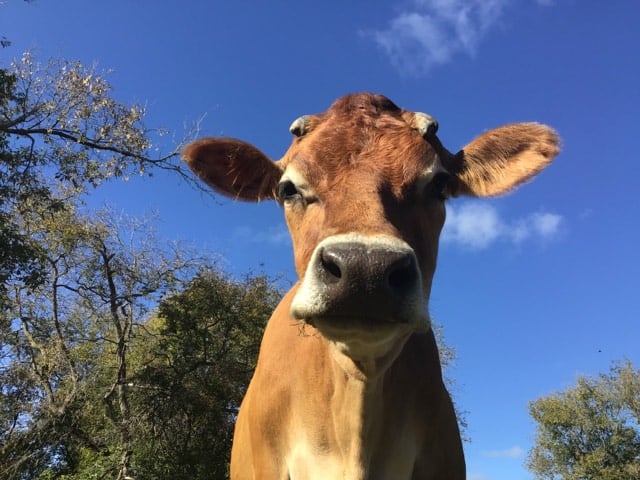


One Comment
Comments are closed.